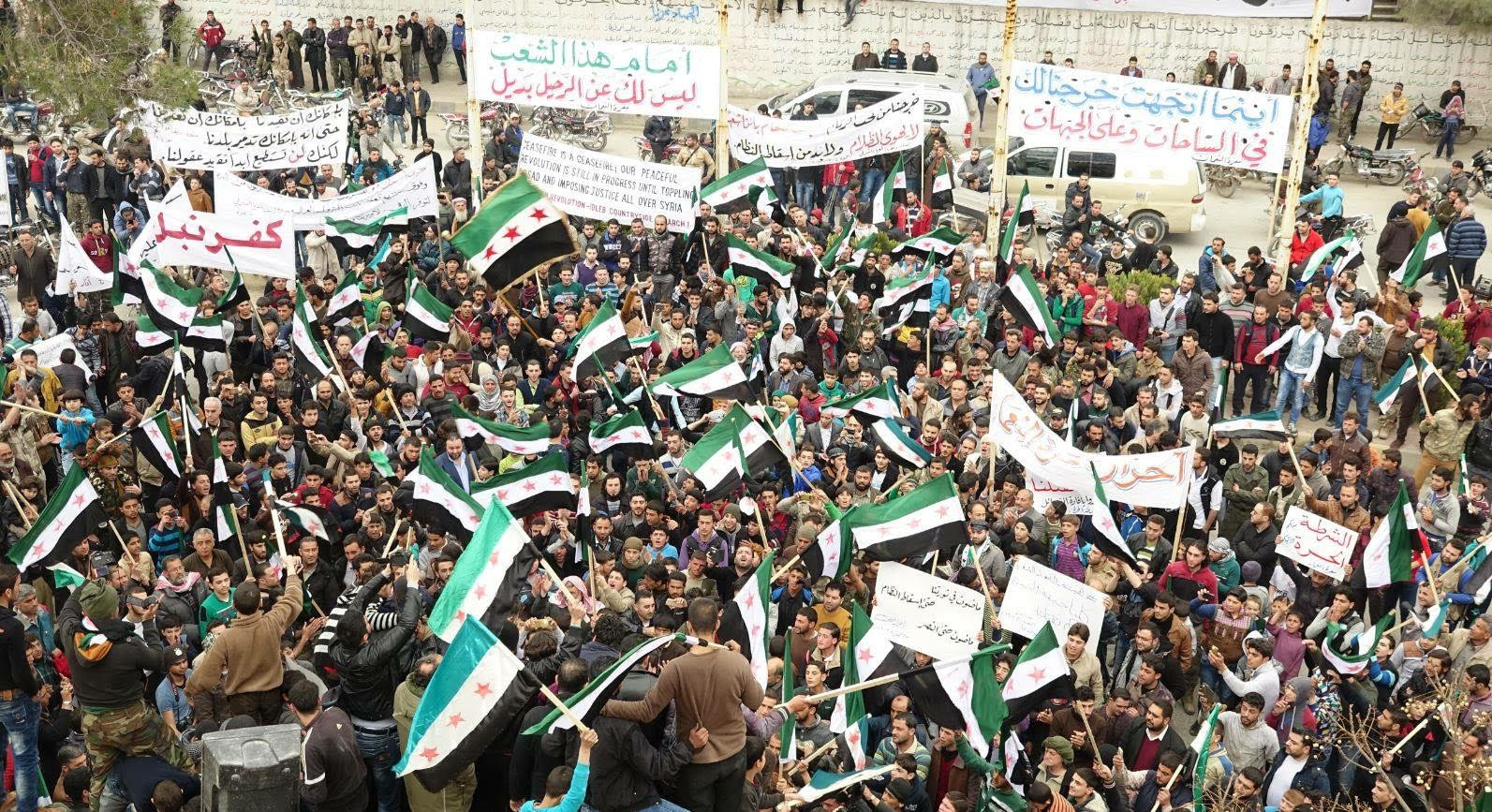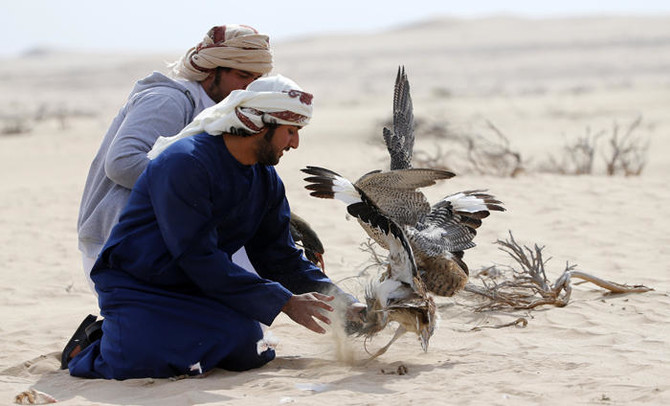In this Doha News special, we speak to people in Qatar who are from countries that took part in the Arab Spring 11 years ago.
“If the people want to live, then fate shall respond one day”—those were the words of the late Tunisian poet Abu Al Qassim Al Shabi that were heard at the birth of the Arab Spring in Tunisia and echoed for months in the region before eventually landing in Syria.
On 15 March, 2011, the revolution erupted in Syria, where the words Yallah irhal ya Bashar, meaning “Come on, get out oh Bashar”, were heard in cities across the country, calling for the ousting of President Bashar Al Assad.
To 37-year-old Abdulwahab, the chances of Syria being the next country in the Middle East to take part in the Arab Spring—after Tunisia, Egypt, Yemen, Libya, and Bahrain—was high.
“Even though the revolution started in March, the conversation about the revolution for me started a few months before that when we saw the scenes in Tunisia and Egypt,” Abdulwahab told Doha News.
Torn between fear and hope, Yemenis in Qatar look back at the 2011 revolution
Reflecting back on the start of the revolution, also known as “The Day of Rage”, 23-year-old Alia (an alias), who was 12-years-old at the time, said that fear in the “Kingdom of Silence“, as Syria was dubbed for decades, was broken the moment people took to the streets.
“Speech was closely self-monitored at home and out on the streets; the idea that people would so publicly and proudly express their frustration towards the government, demanding concessions and its fall was particularly unfathomable,” said the researcher, who resides in Qatar.
Unlike Abdulwahab, and as a young witness of the revolution, Alia was unable to grasp the emotional depth of the revolution at her young age.
“I would see my family and our friends experience joy, hope, sadness and extreme frustration throughout, but I was too young and unaware to grasp this and the emotional depth that these protests carried.” she said.
The arrest of 15 teenagers in Daraa, in February 2011, for spraying “it’s your turn, doctor” on a wall in Daraa, referring to Assad after the previous protests in the region toppled their leaders is what triggered the initial demonstrations; after earlier calls by activists were silenced by the regime.
Demonstrators had no choice but to break their silence on the decades of corruption, forced disappearances and oppression of the 40-year rule of the Assad family.
A well known adage in Syria that for every citizen there were two mukhabarat or ‘intelligence officers’, reporting on them forced the nation to take to the street demanding dignity and freedom.
Alia joined hundreds of other protestors in Syria on 8 April, where she documented the events with her grandmother who became known in the neighbourhood as an established revolutionary, protesting the regime and leading demonstrations at her old age.
“I was armed with a video camera. Initially I was warned by many around me to put my camera away, because I would be easily targeted by government snipers that would be sitting on rooftops, but I was also encouraged by others to keep filming,” she said.
Syrian security forces had immediately started killing civilians, capturing one soul after another, ripping life out of the streets of Syria whilst shackling spirits that were once born free.
At the height of the protests, Qatar shut down its embassy in Syria and the Arab League decided to suspend the country’s membership from the bloc due to Assad’s ongoing war crimes against civilians.
The Gulf state was also the first to establish an embassy for the Syrian opposition. To date, Qatar refuses to normalise with the Syrian regime, unlike some Arab countries that have initiated contact and appear to be warming towards Assad, publicly, once again.
From revolution to war
Upon the refusal of the international community to take decisive action against Assad, despite the massacres perpetrated against the civilian nation, the Syrian people began to arm themselves. The revolution escalated into a war between the Syrian regime and the opposition, both backed by different foreign players, with the latter being backed only disparately, with no single force uniting them.
On one hand, Assad was backed by Russia and Iran. On the other, opposition groups were being backed by Saudi Arabia and Turkey.
As fighting spread to Aleppo and other parts of Syria, Assad carried out one massacre after the other, using chemical weapons on defenceless civilians who only wanted a better life, free of fear and corruption.
And with an absence of accountability, civilians paid the price.
By 2013, the UN registered more than two million refugees, before reaching 6.6 million in 2021, as more people fled the unbearable conditions on the ground. In the same year, the notorious Ghouta chemical attack massacre took place on 21 August, which human rights groups report killed at least 1500 people.
Exactly a year prior to the massacre, former US President Barack Obama had said that ‘chemical weapons’ are a ‘red line’, implying that any use of them would force the US to intervene. The Assad regime carried out their first chemical massacre, and Obama backtracked on his word, deciding to not intervene, leaving millions of Syrians who were seeking international help – completely alone.
A famous description Syrian activists attribute to their uprising is “the orphaned revolution”, in which they imply that they have been ignored by the world, and found no solace in any power to end the decade long destruction and war crimes perpetrated by the Assad regime.
As the various Syrian opposition groups began gaining traction and land, fighting against the Syrian regime and Iranian militias, Russia was called into the country by Assad in 2015.
Russia began conducting airstrikes in Syria under the pretext of fighting ISIS, which had emerged in 2014, as the US deployed Special Ops Forces to northern parts of the country.
To date, both Russia and the US are refusing to be held accountable for the human loss their attacks caused.
In the same year, the world’s attention shifted towards the Syrian crisis when three-year-old Alan Kurdi’s body was seen washed up on a beach in Turkey, reflecting the safety that people found in the sea rather than the warmth of their home country.
“I can’t help but feel and carry a sense of guilt, because I contributed to the narrative that supported the idea of revolting, yet at the same time did not have to suffer the consequences that millions of people have suffered,” Abdulwahab said, as he touched upon the survivor’s guilt many Syrians in the diaspora feel.
In Syria, a leader destroys his own land and displaces more of his people.
This was further amplified when Assad and his Russian backers besieged and bombed Aleppo in 2016 after the city resisted government forces.
Assad’s forces advanced from one province to another as ceasefires have continued to be violated by the Syrian regime. This was seen during the battle of Idlib in 2019, when the Syrian regime attacked the last stronghold of the opposition.
Idlib is a strategic area as it borders Turkey and is the place where those who have survived previous massacres and deals committed by the regime, are displaced to. Despite a ceasefire being announced in March 2020, it was violated by Assad and his Russian military backers, leading to the death of over 300 civilians and the displacement of almost 100,000 Syrians.
It was also in 2019 when Assad killed the singer of the revolution, Abdelbaset Al Sarout, whose voice continues to live in the hearts of every Syrian in favour of toppling Assad, having gone from a young football player to a revolutionary – characterising the revolution in all its aspects.
Humanitarian cost
The crisis in Syria was not limited to the shelling of houses with the support of Russian and Iranian backers, as the Assad regime arrested and forcibly displaced those who spoke against him.
The horrifying methods of torture used by Assad were seen in 2014 through the Caesar photographs, which were leaked by a defected Syrian military photographer. More than 28,000 photos of deaths under government custody displayed the cruelty of the regime.
The code name of the former military photographer was behind the 2020 “Caesar Act”, a set of sanctions imposed by the US that target businesses, individuals, and government institutions that deal with the Syrian administration.
One prison that became notoriously known for torturing Syrians was the Saydnaya Military Prison, also known as the “slaughterhouse”, and which has a history a dark history in the Syrian imagination, as it characterises the dark days prior to 2011, where opposition Syrians or anyone suspected by the regime was forcibly disappeared to either Tadmur military prison, or Saydnaya.
A 2017 Amnesty report found that at least 17,723 people have been killed in government custody between March 2011 and December 2015, with an average of 300 deaths occurring each month.
Beyond robbing the country from its beauty, its people and life, the Syrian regime has looted at least 30 towns and villages.
Now, 11 years on, Alia says she still has hope for a better future for her homeland through the Syrians studying to understand their country, those working on ensuring the right side of history is documented, and those on the ground.
“It’s an unfortunate pattern of life that human beings can still adapt to and live through with a great cost nonetheless,” she said.
Abdulwahab also has hope for Syria.
“I think the old cliche always applies, ‘hope is the last thing to die’. But that is primarily because I can’t see a scenario of things getting much worse than what they are today,” he said.
“I am actually hopeful that the moment will come, where the stakeholders may just decide that this price was too heavy that is being paid so far and that the set of events that will start to unfold that will actually reignite the original spirit of the revolution,” added Abdulwahab.
Courtrooms across Europe have begun trials against former Assad regime officers, giving hope to Syrians that accountability – though late – is on its way.
As the streets of Syria continue to bear witness to the crimes committed against its people, the demands of Syrians still ring clear as protests continue to erupt in various parts of the country, with those inside the country and in the diaspora alike ensuring that the revolution continues in spite of everything.
And until the war is over, they ask: “when will fate answer our call?”
_______________________________________________________________________
Follow Doha News on Twitter, Instagram, Facebook and Youtube







